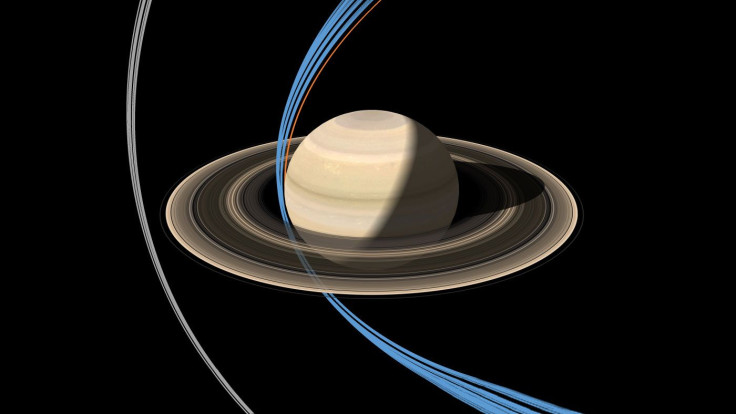NASA’s Cassini Begins Mission ‘Endgame’ With Its First Ring-Grazing Dive

The Cassini spacecraft has begun the first phase of its mission “endgame” by making its first close dive past the outer edges of Saturn’s rings, NASA announced Monday.
The spacecraft, which has been in orbit around the gas giant since 2004, crossed through the plane of the rings at 8:09 a.m. EST on Sunday at a distance of approximately 57,000 miles above Saturn’s cloud tops — just 6,800 miles from the F ring, which is roughly 500 miles wide.
Saturn’s rings, first observed by Galileo in 1610, are made mostly of water-ice granules. The planet has four main ring systems, named alphabetically in the order they were discovered — A, B, C and D — and several other, much fainter rings that lie farther from the planet. Cassini will, during its planned ring crossings in March and April, plunge through the dusty outer reaches of the F ring.
“It's taken years of planning, but now that we're finally here, the whole Cassini team is excited to begin studying the data that come from these ring-grazing orbits,” Linda Spilker, Cassini project scientist at NASA’s Jet Propulsion Laboratory, said in a statement. “This is a remarkable time in what's already been a thrilling journey.”
This is the first of 20 ring-grazing maneuvers the spacecraft is scheduled to perform in the coming weeks and months. Each of these orbits will last one week, and scientists at NASA believe they would provide some of the best views of the outer regions of the rings and Saturn’s moons.
Once these ring-grazing experiments are done, Cassini will begin its “grand finale,” during which it will pass just over 1,000 miles above the thick clouds that enshroud Saturn. This would then be followed by a fatal plunge through the planet’s atmosphere on Sept. 15 — a move that NASA said is needed to protect Saturn’s potentially habitable moons.
Just two days prior to its first ring-grazing approach to Saturn, Cassini’s imaging cameras captured photos of Saturn’s atmosphere above its northern hemisphere. Among other things, the images showed the unique hexagon-shaped jet stream above the planet’s North Pole.

“This is it, the beginning of the end of our historic exploration of Saturn. Let these images — and those to come — remind you that we’ve lived a bold and daring adventure around the solar system's most magnificent planet,” Carolyn Porco, Cassini imaging team lead at Space Science Institute, Boulder, Colorado, said in a separate statement.
© Copyright IBTimes 2025. All rights reserved.






















